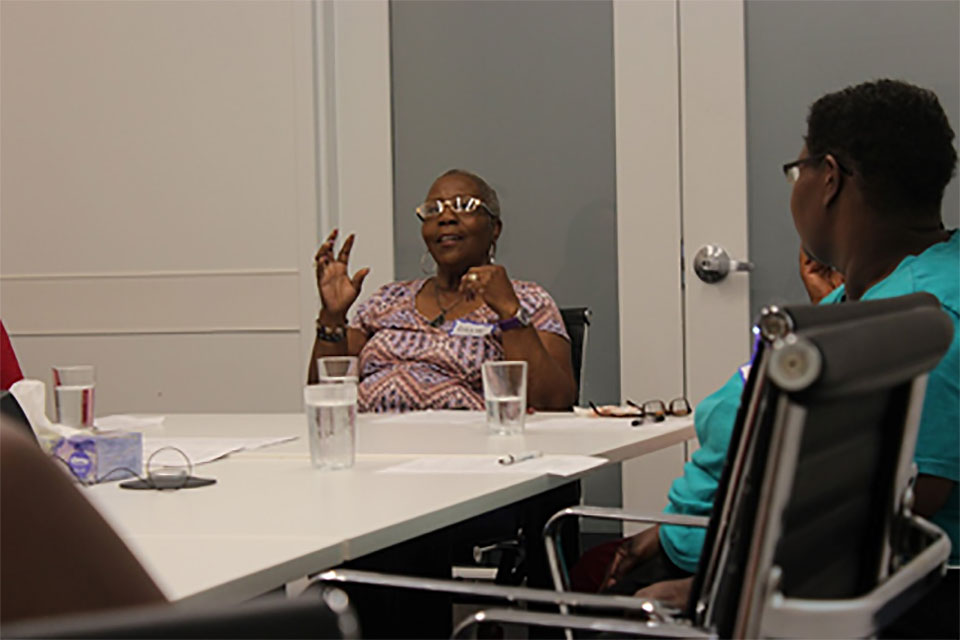Building a Learning Health Care Community
Written By: Yoon Duk Hong, PHSR Graduate Student, and Gail Graham, Patient Partner/LHCC Stakeholder Advisory Board Member
Medically underserved populations have traditionally faced poor health care system experiences and lack of trust in the medical system, which has contributed to poor health outcomes. To tackle these problems, The PATIENTS Program has developed the Learning Health Care Community model, envisioning a community where health care systems and providers learn directly from patients what issues actually matter in their communities, and where patients learn from providers how to live a healthy lifestyle.
What is a Learning Health Care Community?
In 2015, the Institute of Medicine (IOM) – now the National Academy of Medicine – released a new model for health care delivery termed the Learning Healthcare System, a health system where data and knowledge are used to improve patient care and patient care contributes to data and knowledge.
The Learning Health Care Community model aims to bring the Learning Healthcare System concept more authentically into the community. In a Learning Health Care Community, there is bi-directional learning and partnership between community members and health care systems and providers — they learn to speak each other’s language. Providers are culturally competent, and patients are health literate. A Learning Health Care Community addresses the diverse needs of all patients and families. In particular, neighborhoods that historically have been medically underserved become part of a Learning Health Care Community where medical needs and patient preferences are addressed more effectively through lasting relationships built on trust.
West Baltimore as a National Model for Success
Health disparities in West Baltimore are widely recognized on both the state and national level. To tackle these disparities and bridge the gap between health care providers/systems and communities, The PATIENTS Program set out to engage members of the West Baltimore community and elicit their perspectives on how to develop a culturally sensitive, competent, and sustainable Learning Health Care Community.
We conducted 15 focus group sessions and 21 interviews, with a total of 109 participants representing patients, community members and leaders, health care professionals and administrators, and others who have a personal stake in health care delivery in West Baltimore.
What Did We Find?
The focus groups and interviews were very informative in a number of ways. It was clear that health is the number one priority for the vast majority of people. They want to stay healthy not only for themselves, but also for their families. Community members acknowledged that they learn about their health needs mostly through their providers, but expressed frustration with the limited time and attention they are given when they visit their providers. Another key finding was surrounding what questions providers should be asking patients. While providers mainly focused on questions related to medical care, such as their medical history or symptoms, patients expressed the desire to be asked about broader determinants of health – their thoughts and feelings, mental health, social support and barriers to care, their understanding of and questions related to personal diagnoses. By addressing these aspects of health care, we will start to establish the rapport needed for bi-directional learning and care.
Participants provided great ideas on how to operationalize the Learning Health Care Community model. When asked what the Learning Health Care Community should look like, many themes arose, some of which included individualizing the model to each community and making it sustainable and community-based. They also suggested that there should be a collaborative portal for community members to provide ideas and an integrated data system to combine and track information. Many participants thought that a Learning Health Care Community should incorporate social determinants of health, and that providers should go into the community and meet patients where they are, instead of waiting for patients to come to them. Specifically, participants want to see a return to home visits and office visits that do not feel rushed because the provider has a 15-minute time limit to meet with them.
Where Do We Go from Here?
Our participants described the Learning Health Care Community as “an integration of the community and health care systems,” which is exactly what we had envisioned. We are very excited to have taken the first step towards building a Learning Health Care Community, and are grateful to the community members, providers, and others who collaborated with us on this effort to ultimately reduce health disparities and improve the health of medically underserved communities.
Now that the study has been completed, The PATIENTS Program is beginning to disseminate its findings to stakeholders through community gatherings, conferences, and other media. If you are interested in learning more about the project, please visit the Learning Health Care Community webpage on The PATIENTS Program website.

